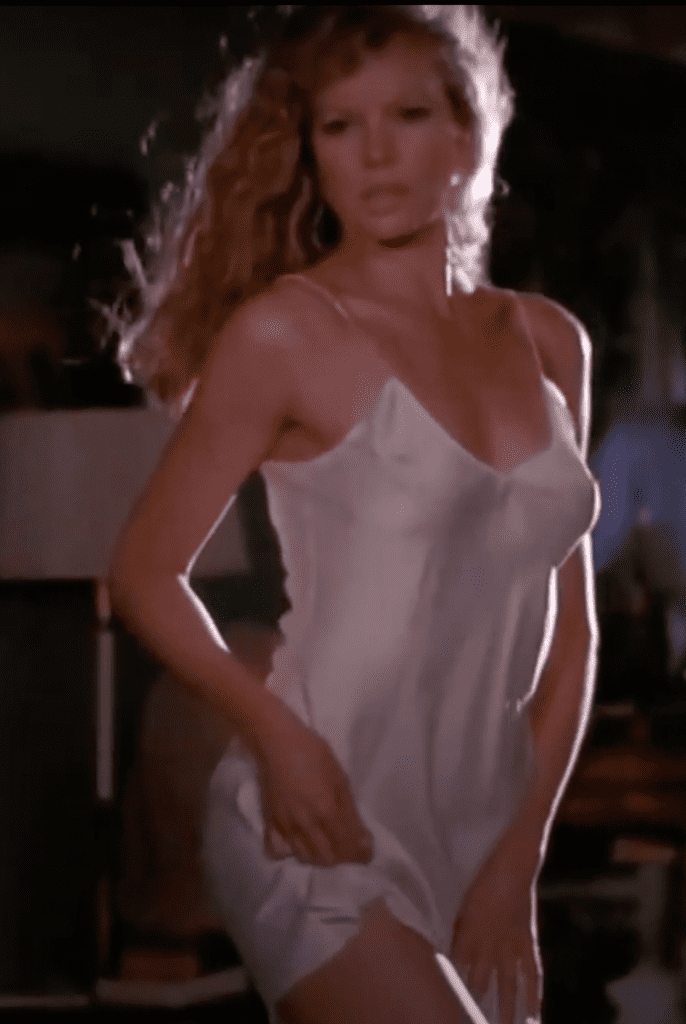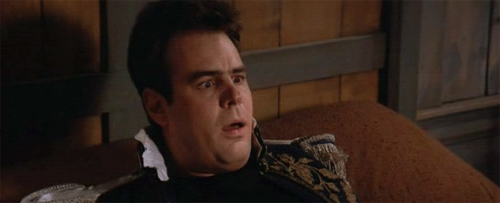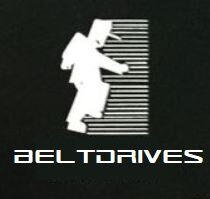Pump Up The Volume – MARRS – Released August 24th, 1987, 4AD Records
Pump Up The Volume is the 1987 hit single from MARRS and one of the first tracks to properly introduce scratching, sampling and house music to mainstream radio audiences.
Few one hit wonders have had quite the same impact that this has had, though it was only ever meant as an experimental project, essentially two tracks by two different bands, with the title track remixed once again by CJ Mackintosh.
The resulting remixes then comprised the two tracks on the release – i.e. Pump Up The Volume and aaah… that other one, what’s it called again? Ah yes Anitina. The one nobody remembers, here it is.
The subsequent release was then credited to MARRS, an acronym of the names of all of those involved; Martyn Young, Alex Ayuli, Rudy Tambala, Russel Smith and Steven Young.
Now here’s where things get messy.
MARRS.Needs.Clarification.
Ok so the TLDR; one 12” featuring two bands, one “remixing” the other – a collaborative project that was simple in theory and infuriating in practice.
As a creative endeavour it was a huge disaster, as a record, it would go on to become a massive success.
So first let’s discuss the B side, Anitina (The First Time I See She Dance), a somewhat forgettable indie-electronic track that’s very much of its time, but worth mentioning for historical reasons.
The original Anitina track was recorded by A.R.Kane, a UK-based duo (Alex Ayuli and Rudy Tambala) whose music enjoyed limited success at the time but have since attained broader cult status.
If you need a yardstick to measure the coolness of said cult status, keep in mind that Andrew Weatherall named his former club night, A Love From Outer Space, after track two of the 1989 A.R.Kane album “i“.
And as one half of the Asphodells, Weatherall also released a cover the song, using it as the opening track to his outstanding 2012 mix album, The Masterpiece.
So that’s A.R.Kane’s coolness well and truly established by Guvmosis.
Also on board was Russel Smith, who briefly made the duo a trio and played bass on Anitina, but not, it should be noted, the funky bassline from Pump Up The Volume.
Instead, Pump Up The Volume was recorded by another UK duo called Colourbox, an electronic group who, unlike A.R.Kane, were signed to 4AD at the time.
Colourbox remixed Anitina, adding additional electronic elements to the track.
They also recorded the original version of Pump Up The Volume, a simple dance track using a sample from Eric B & Rakim as the main hook.
This first iteration of the track was then passed along to A.R.Kane, who added some guitar parts and other elements.
(Indeed, the only common elements you can really hear in both tracks are those immense distorted guitar sounds.)
Still following me?

Ok, small miracles then. Because even my head’s now tied in a knot.
Of course, in theory, this project was a cool idea – two bands, each with common influences, mainly dub, post punk and electronic music, essentially swapping tracks for the others to work to see what might happen.
Apparently, though, the entire process was messy and not especially harmonious, but the project was saved thanks to some special secret scratchy sauce.
Enter CJ Mackintosh, a veteran DJ, former DMC champion and long-time Ministry of Sound resident who forged Pump Up The Volume’s next and final iteration, by adding more oomph to the beat and also overlaying more scratching and samples.
Mackintosh’s extensive DJ career intersects both hiphop and house and his extensive production and remix resume includes the such names as Masters at Work, The Jungle Brothers, De La Soul, Eric B and Rakim, A Tribe Called Quest, Gang Starr and Coldcut.
This helps to explain why Pump Up The Volume sounds the way it does, a curious hybrid of house and hip hop which would later become known as hip house.
The subsequent success of Pump Up The Volume, meanwhile, helped bolster Mackintosh’s remix career opening the door to major recording artists like Janet Jackson and Whitney Houston.
Marrtian Invasion
What happened next was likely a surprise to everyone.
First, Pump Up The Volume was a huge club tune, so popular, in fact, that it was eventually released into the mainstream charts where it shot right up to the top.
Eventually it even reached number one, mercifully dislodging this twat.
In addition to delivering us from the poster boy for 80s cheese (much to the chagrin of his evil overlords at Stock Aiken and Waterman), Pump Up The Volume also managed to keep 80s superstars like Bruce Springsteen, Gary Numan and Madonna from the top position.
Even the king of pop himself, Michael Jackson, couldn’t fend off the Marrtian invasion with the title track from his 1987 album, Bad, peaking at just number three on the UK charts. (Though it did reach #1 here in Ireland.)
It’s fair to say I was already a massive Michael fan at the time but from the moment I heard Pump Up The Volume I knew I was listening to the future.
The music video, featuring footage of space launches, astronauts and cosmonauts in training all cut to the beat, heightened my excitement, and, I wore the VHS tape out rewatching it, having recoded it off the telly.
This was around the same time I got my first ever dual cassette recorder and became obsessed with making tapes.
I still remember my first ever all-banger compilation which started off with Pump Up The Volume, followed swiftly by Michael Jackson’s Smooth Criminal, Gloria Estefan and Miami Sound Machine’s Rhythm Is Gonna Get You and Paul Hardcastle’s 19. 🔥
Still only single digits and already a master selector.

It’s fair to say that Pump Up The Volume was one of the first proper dance tracks I ever heard and it shaped my musical tastes forever.
It shaped me in other ways too, perhaps best discussed with a private therapist and not on a public blog, but I’m curious to know if others from my generation experienced the same extra-terrestrial awakening.
I’m speaking, of course, about its inclusion in the “sex” scene from the 1988 movie My Stepmother Is An Alien where Kim Bassinger seduces Dan Ackroyd.
Kim Bassinger’s scantily clad writhing to MARRS was forever fused my budding neural pathways, inextricably linking 909 kickdrums and sex in my mushy young brain.
Not that I knew what a 909 was. Or what sex was for that matter. I was still 9 years old, but it didn’t matter, I just knew I wanted as much of both as possible.
Still on the subject of movies, Pump Up The Volume also inspired a 1990 Christian Slater film of the same name, a further testament to how popular this track was on both sides of the Atlantic.
It didn’t happen in a vacuum, of course, there were plenty of examples of hip house, scratch collages and turntablism prior to this release. For example Coldcut’s Paid In Full remix for Eric B & Rakim had preceded MARRS by a few months while Bomb The Bass’ Beat Dis was also recorded around the same time but would not get released until 1988.
But MARRS’ success in the charts made all the difference, paving the way for more follow-ups, such as The Theme To S-Express released in 1988.
All the aforementioned tracks relied heavily on sampling, scratching and turntablism, a synergy of hiphop and house that formed the basis of my musical tastes as I entered my teens.
I know a lot of people who hate this track though personally I think it’s a masterpiece that still sounds amazing today.
So much has happened in the 37 years since this record came out, new scenes, new technologies, new production methods and entirely new genres of music.
But somehow this track doesn’t sound dated.
I can take any number of other house tracks from 87 and play them and the first thing you’ll notice is how primitive they sound.
Similarly, I can fast forward a decade to 97 and pick some of the top records of the year. I’m guaranteed many will coast by on nostalgia, with a few timeless bangers while the rest sounds pure cringe.
How about some minimal techno from 2007, or maybe some Drumcode “bangers” from 2017 you never thought you’d ever have to hear again – have they held up as well?
Not in the slightest.
But, even if we wanted to, we’ll never get another record like this ever again. Pump Up The Volume’s arrival coincided with the era of peak sampling, as record companies grew increasingly paranoid and litigious.
Consequently a record like this, with its cavalier use of uncleared samples could never be made today. I mean, you could try, but the way the music business works today, the best you could hope for is bankruptcy.
And even if, by some miracle, you managed to avoid that, what are the odds of it reaching number one?
You’re better off buying a lottery ticket mate.
Because even the people involved never could have believed they had such a massive international hit on their hands. A messy studio project with a troubled production, one pot with too many chefs plus dozens of uncleared samples that turned out to be one of the most perfect lighting-in-a-bottle moments of the 1980s.
It also set a new precedent whereby underground dance acts found new audiences through (often unexpected) chart success, including 808 State, The KLF, The Shamen, The Prodigy, Altern 8 and Orbital – which is precisely how I graduated from teenie-bopper to technohead in a matter of months.
So yeah, that’s the story of Pump Up The Volume by MARRS.
I’m pretty sure that’s how it all went down, if not feel free to contradict me in the comments and call me an idiot, seriously, I don’t mind, it’ll make a refreshing break from all the shitty SEO spam.
In the meantime, I hope you don’t mind I want to hear this one more time so I’m going to put the needle on the record, put the needle, put the needle on the record till the drumbeats go like…


